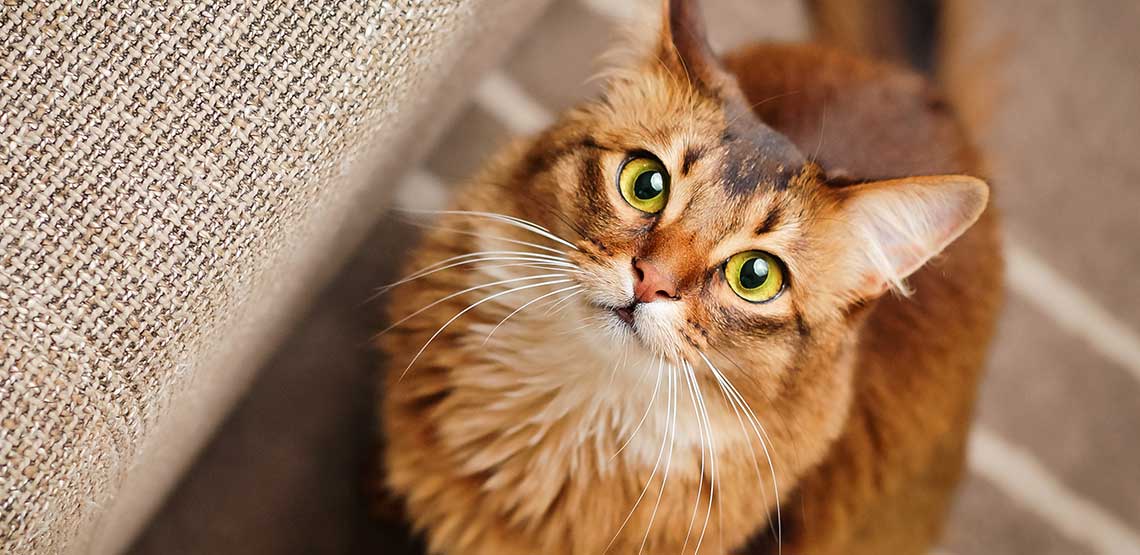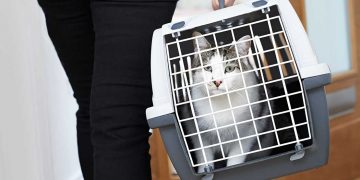Common Cat Eye Problems
Cats generally have excellent vision, but they are susceptible to a number of common eye complaints. It may surprise you to know that cats actually suffer from many of the same eye conditions that affect humans, even though their vision is far superior to ours. Cat's eyes are very large, too, which makes them more prone to irritation from foreign matter such as dust, seeds, grass, dirt and hair. They also have what is known as a "third eyelid" (the nictitating membrane), but this is seldom visible unless the cat has an eye problem.
Cats' eyes are well lubricated by tears, which are produced from special glands in the eyelids. If excessive tears become apparent, it could indicate that your cat has an underlying eye problem that needs treatment. It is important to remember that if cats do develop an eye problem, it could lead to blindness if left untreated.
Cat Eye Problems, Symptoms and Treatments
Common cat eye ailments, their symptoms and the recommended treatments are:
Eye injuries. Apart from something blowing into the eye and causing a blockage, cats also run the risk of getting scratched in the eye by other cats, or even caught in the eye by a sharp tree branch. If such wounds are left untreated, a cat eye infection or ulcers could develop, or your cat could lose its eye altogether.
Conjunctivitis. An inflammation or reddening of the pale pink membrane around the eye, accompanied by a discharge, could be conjunctivitis. It often makes the cat squint and is generally caused by a feline herpes virus (FHV-1). Conjunctivitis can also be caused by Chlamydia or mycoplasma or may be further complicated by the addition of both infections. Usually, conjunctivitis is present in one eye only, but it can affect both. The problem with conjunctivitis is that it can be recurrent, and this can make the problem difficult to treat and eradicate. Consequently, any cat suffering from conjunctivitis should have regular checkups with a veterinarian.
Tumors. These can include eyelid, conjunctival or limbal tumors. Conjunctival and eyelid tumors are generally malignant, whereas limbal tumors are benign and can easily be removed by surgery. Some tumors can eventually lead to glaucoma and blindness, leaving no other option than to remove the cat's eye altogether. It seems that most tumors are more prevalent in heavily pigmented cats.
You May Also Like:
Related Search Topics (Ads):
Glaucoma. This causes increased pressure on the eye, which is brought on by a buildup of fluid. Of all the cat eye ailments, this is the most common to cause blindness. It can be treated if caught early enough, though. Treatment usually involves either eye drops or surgery. Classic symptoms of glaucoma include cloudy corneas, fixed pupils and enlarged eyeballs.
Cataracts. These cause a cloudy-looking lens and generally affect old or diabetic cats. If untreated, the lens will eventually turn white and the cat will consequently go blind. Surgery can be performed to remove the affected lens and, in some cases, lens implants are used to help improve the vision.
Progressive retinal atrophy (PRA). This causes gradual deterioration of the retina and will eventually lead to blindness. It is unfortunately untreatable, but at least not painful for the cat. As its vision deteriorates gradually, the cat can actually learn to accept the condition, and most manage to cope with it quite well. It is thought to be an inherited disease and can be found in both pedigree and non-pedigree cats.
Feline hypertension. This is the most common cause of "sudden blindness" in cats. This problem can often occur if a cat is suffering from feline diabetes, kidney disease or hyperthyroidism, so close monitoring by a vet is imperative in these circumstances. Common symptoms to look out for include blood in the eye chamber, slow response to light and dilated pupils.
Home Treatments
Proper cat eye care is essential to maintaining cat eye health. Monitor your cat's eyes regularly for signs of wound or infection. You can try removing debris by flushing the eye with cool water for about 10 minutes. Your vet may also recommend ointment or eye drops to treat infection. Administer these as per your vet's specifications.
To administer eye drops/ointment, do the following:
- Clean around the eye.
- Place the cat on your lap and support its head firmly.
- Tilt the head back.
- For ointment, close the eye and squeeze the ointment along the lower eyelid. For eye drops, gently open the eye and place a drop in the middle.
Wrapping the cat in a towel will help prevent it from struggling and scratching you.
Aftercare
Feline eye problems can develop and cause blindness at any age, but because cats have enhanced smell, hearing and touch, they can begin to rely on these senses to get around if necessary. You can help your blind or partially blind cat by keeping its routine the same, storing its cat products in the same places and avoiding any loud or sudden noises.

